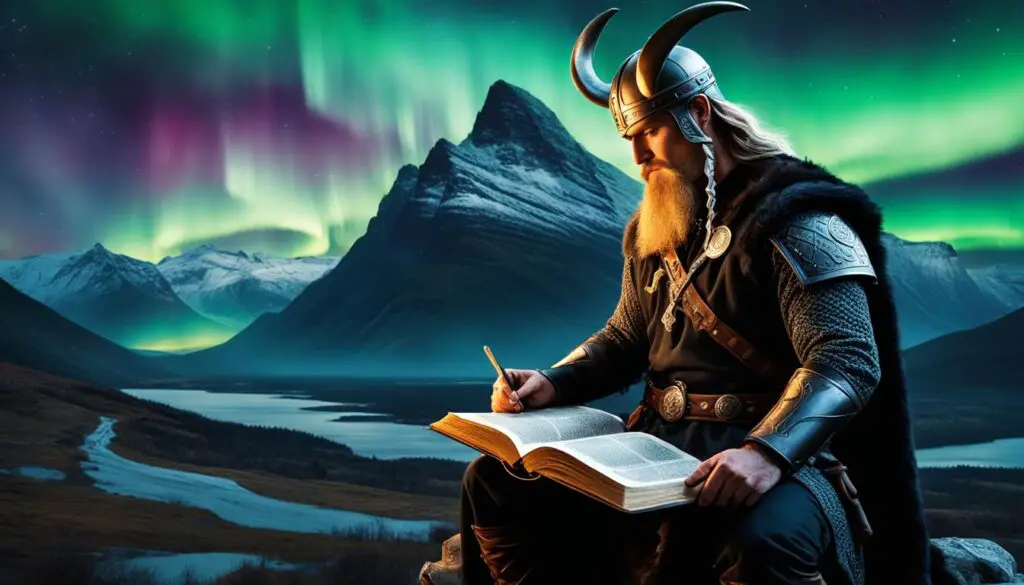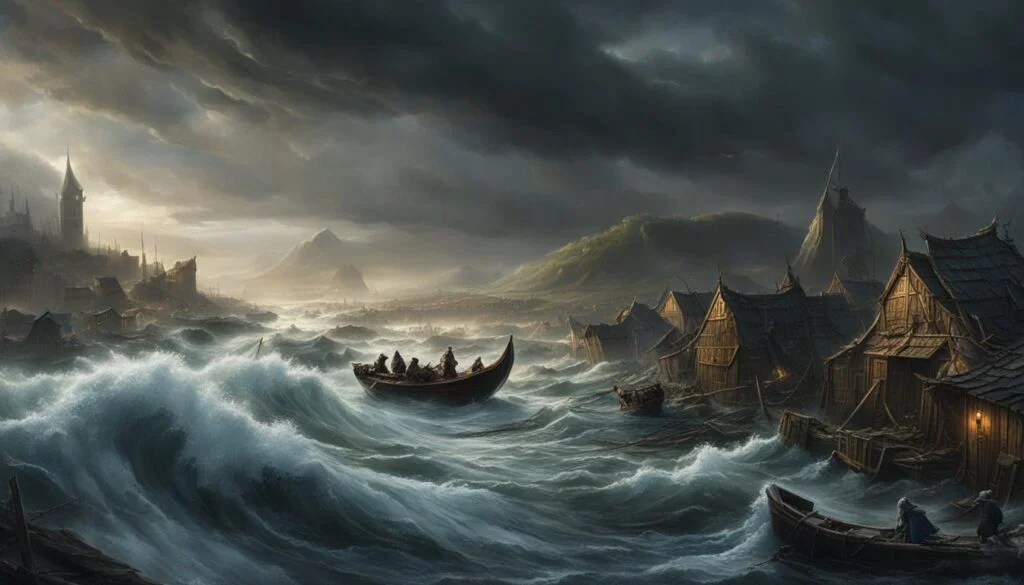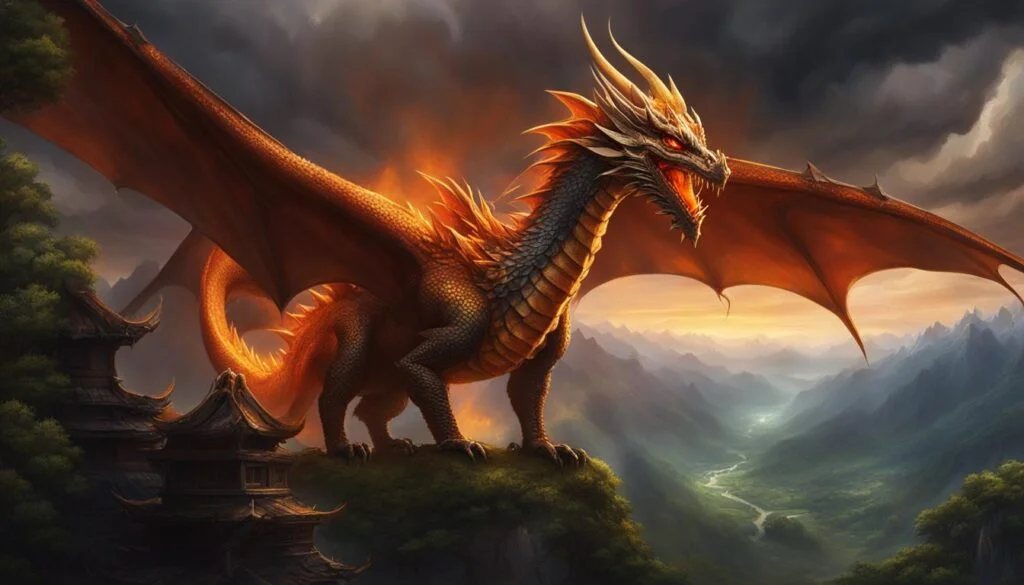When we think of ancient belief systems, Norse mythology often comes to mind. But is Norse mythology really a form of paganism? To truly understand the answer to this question, we need to delve into the world of Norse gods, ancient rituals, and the revival of old traditions.
Key Takeaways:
- Norse mythology is closely associated with ancient pagan beliefs and practices.
- The worship of Norse gods includes offerings, toasts, and invocations.
- Modern believers in the old Nordic religion continue to honor the gods through rituals.
- Asatro, the worship of the Norse gods, is a revival and reinterpretation of the old religion.
- Norse mythology has had a significant impact on popular culture and modern paganism.
The Worship of Norse Gods in Modern Times
Modern believers in the old Nordic religion, also known as Asatro, meet in the open air just as the Vikings did. They make offerings, praise the gods, and honor them through toasts and feasts.
The worship of the Norse gods is not a direct continuation of the beliefs of the Vikings but rather a revival based on myths handed down via written sources. The worship is led by male and female cult priests, and specific gods are invoked depending on the season and the theme of the sacrifice.
The worship of Norse gods holds great significance in modern paganism. It serves as a way for believers to connect with ancestral beliefs and traditions, tapping into the rich cultural heritage of the Norse mythology and pagan rituals. By engaging in these practices, modern pagans seek to establish a spiritual connection with the gods and embrace the wisdom and power that they symbolize.
Incorporating the worship of Norse gods into modern paganism allows individuals to explore their spiritual path, drawing inspiration from the ancient belief system while adapting it to the needs and values of contemporary society. It provides a unique perspective on spirituality that resonates with those who are seeking a connection with nature, history, and their own ancestral roots.
The Origins and Name of Asatro
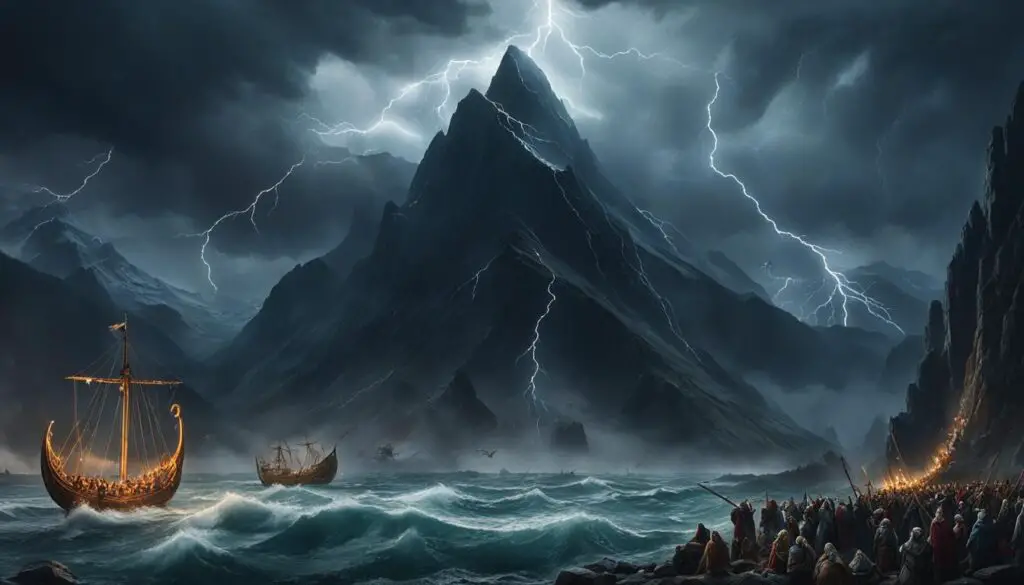
Asatro, which entails the worship of the Norse gods, giants, and ancestors, traces its roots back to ancient times. The term “Asatro” gained popularity in the 19th century when the Vikings, encountering Christianity, lacked a specific name for their religion. Today, the largest Nordic religion society, known as Forn Sidr, was established in 1997 in Denmark. Believers in the old Nordic religion can be found not only in Denmark but also in countries such as Sweden, Norway, Iceland, Great Britain, and the USA.
Asatro is a revival of the ancient Norse religion, incorporating myths and traditions passed down through written sources like the Eddas. It shares similarities with paganism, as both involve the worship of multiple gods and encompass rituals and ceremonies dedicated to these deities.
The Role of Sacrifice in Norse Paganism
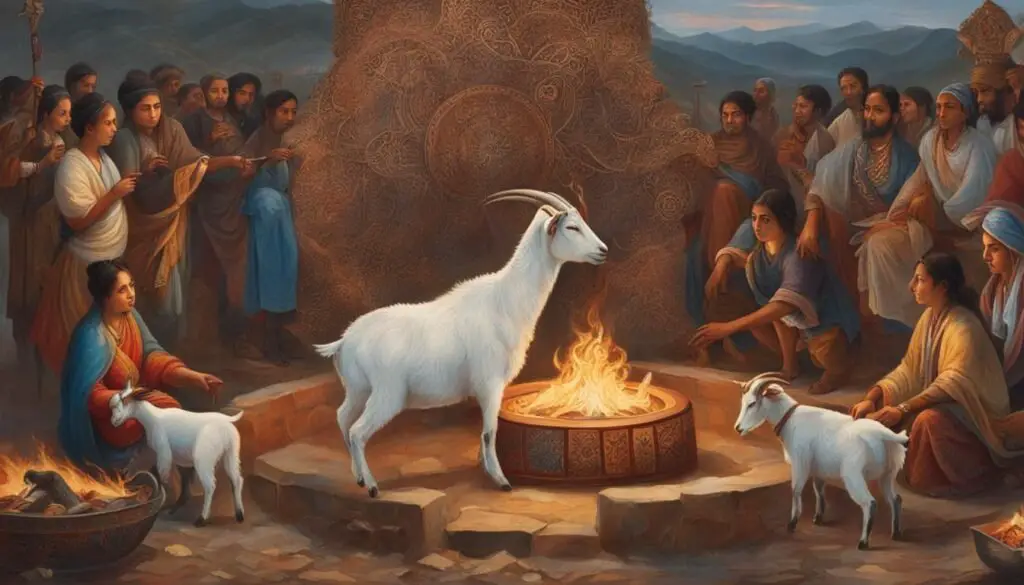
Sacrifice, known as blót, played a significant role in Norse pagan rituals. Modern believers in the old Nordic religion continue this tradition, making offerings during ceremonies held four times a year – at the winter solstice, spring equinox, summer solstice, and autumn equinox.
The purpose of these sacrifices was to ensure fertility, growth, and other blessings, such as a safe journey or a long life. The rituals are carried out by forming ceremonial circles, led by male or female cult priests. The focus of the sacrifices depends on the season and the theme, with specific gods being invoked.
The practice of sacrifice has cultural and historical significance in pagan culture, connecting modern believers to their ancestral roots.
The Viking Year and Festivals
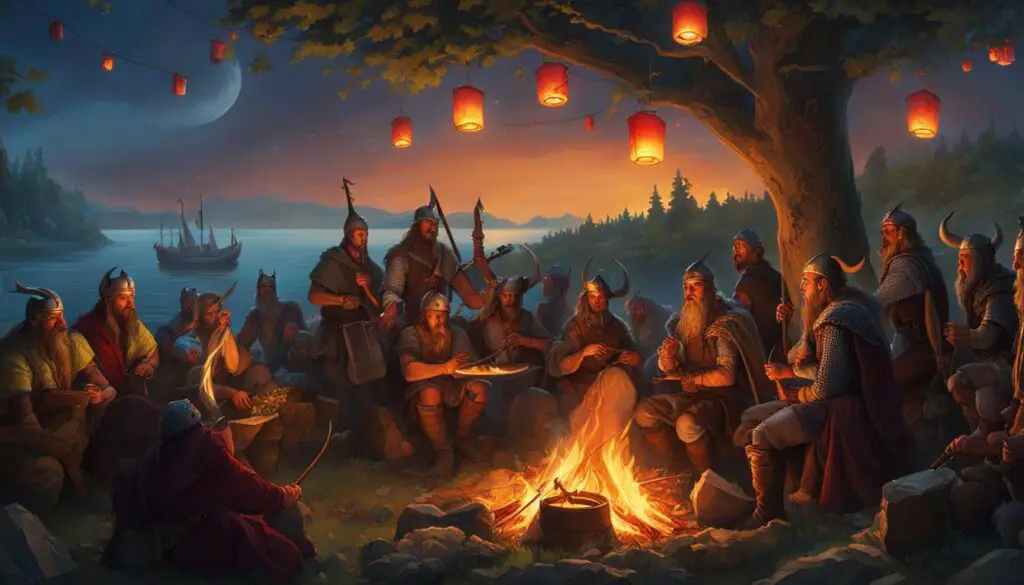
The way the Vikings divided up the year was closely connected to the sun’s yearly course and the phases of the moon. The Viking year began around 13 October and included large public harvest sacrifices and victory sacrifices that marked the transition between winter and spring. The winter solstice, spring equinox, summer solstice, and autumn equinox were all celebrated with specific rituals and feasts.
Festivals during the winter half of the year, including the great festival of Christmas, were marked by celebrations that lasted for weeks. The summer half of the year was dedicated to gathering supplies, and the midsummer solstice was celebrated with communal feasts. The autumn equinox signaled the beginning of the winter half of the year once again.
Different Types of Worship and Beliefs
Norse mythology and paganism were characterized by diverse customs and beliefs across different tribes and regions. Worship and rituals were closely tied to the communal and familial structures, with leaders assuming responsibility for managing the faith within society.
The worship of female powers held significant relevance in Norse mythology and paganism. Fertility and divination rituals, led by women, endured the longest even after Christianization. These rituals played a crucial role in connecting with ancestral beliefs and traditions.
In Norse paganism, various animals and objects were associated with the worship of specific gods. Additionally, the ship held a central role in ceremonial practices, especially during funerals.
Statues and images of heathen gods were utilized in worship rites, although larger statues were intentionally destroyed after Christianization.
Public faith in Norse mythology and paganism was closely intertwined with the cyclical nature of the year and the social hierarchy of society. Local and regional centers of faith, such as temples and multifunctional complexes, played a pivotal role in religious practices.
Overall, the diversity of worship practices and beliefs in Norse mythology and paganism showcases the decentralized nature of the belief system. These practices were deeply rooted in the village, family, and wider societal structures, providing a unique lens into the spiritual and cultural heritage of the Norse people.
Surviving Myths and Legends
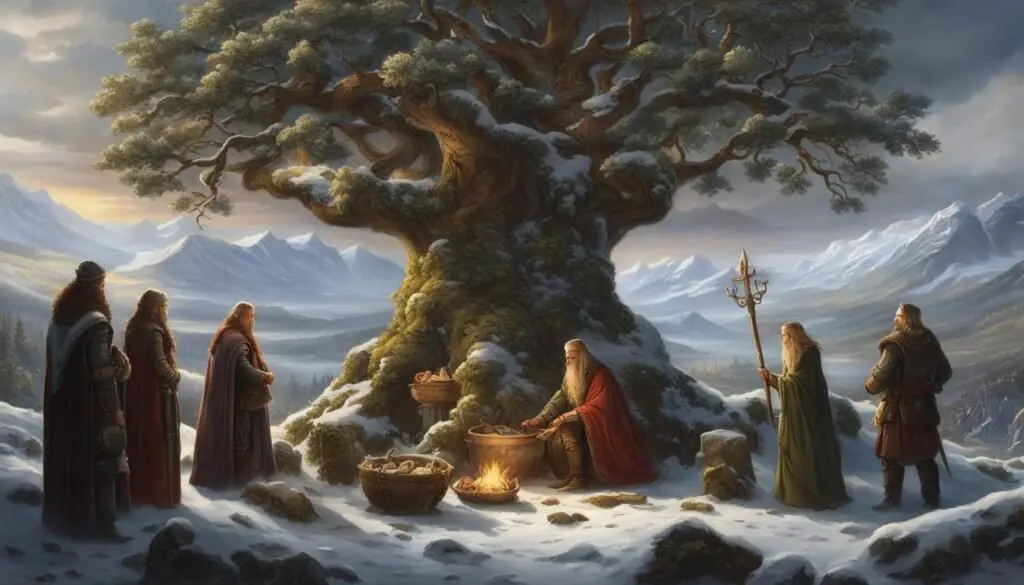
The rich heritage of Norse mythology is preserved through various sources, shedding light on the gods and their captivating tales. The written texts known as the Poetic Edda and the Prose Edda are primary sources that compile myths and legends, passed down through centuries of oral tradition and poetry. These texts offer valuable insights into the Norse gods and their stories, captivating readers with their imagery and symbolism.
Aside from written sources, Norse mythology lives on in Scandinavian folklore, where surviving legends continue to captivate and enchant generations. These folk tales serve as a testament to the enduring popularity and relevance of Norse mythology in the cultural fabric of the Scandinavian people.
Additionally, other Germanic literatures contain references to Norse mythology, further illustrating its widespread influence on the beliefs and traditions of the Northern Germanic tribes.
A visual representation of Norse mythology can also be found in various forms of art. Runic inscriptions, runestones, and image stones often feature intricate depictions of scenes from Norse mythology. These visual representations provide a unique glimpse into the mythical world of the Norse gods.
Furthermore, Norse mythology has left its mark through the names given to places in Scandinavia. Many geographical features, towns, and landmarks are named after the gods, demonstrating the enduring legacy and influence of Norse mythology on the culture and landscape of the region.
Norse Mythology in Comparison to Anglo-Saxon Mythology
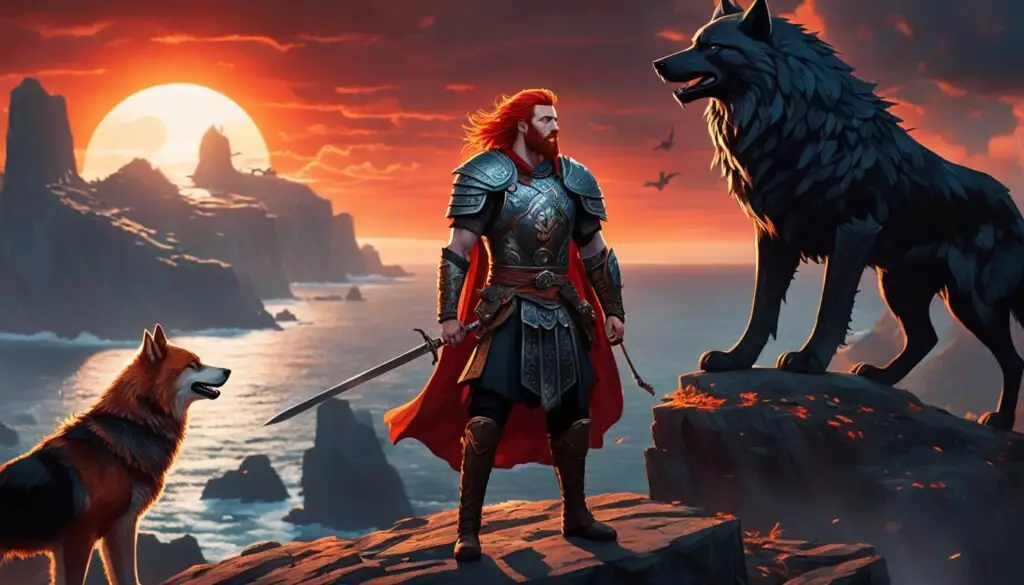
Norse mythology and Anglo-Saxon mythology are closely intertwined, both being rooted in the older common Germanic paganism. These mythologies share similar characters and stories, highlighting the interconnectedness of the Northern Germanic tribes and their belief systems. Passed down through poetry, literature, and oral traditions, the myths and legends from Norse and Anglo-Saxon mythology have significantly shaped the cultural heritage of these regions.
While both mythologies have their unique characteristics, they also exhibit striking parallels. For example, both Norse and Anglo-Saxon mythology feature gods such as Odin and Thor, who are central figures in their respective pantheons. The stories of heroism and adventure, such as the epic tales of Beowulf and the Norse sagas, showcase the valor and ideals that were revered by these ancient societies.
The similarities between Norse and Anglo-Saxon mythology reflect the shared heritage of the Northern Germanic tribes and their beliefs. These mythologies offer a glimpse into the cultural and spiritual practices of these ancient peoples, highlighting their reverence for nature, gods, and the cyclical nature of life.
While Norse mythology is considered the best-preserved version of the older common Germanic paganism, Anglo-Saxon mythology provides valuable insights into the beliefs and traditions of the Anglo-Saxon people. Both mythologies continue to capture the imagination of modern readers, scholars, and enthusiasts, offering a fascinating window into the rich tapestry of Northern European folklore and spiritual heritage.
Norse Mythology in Popular Culture
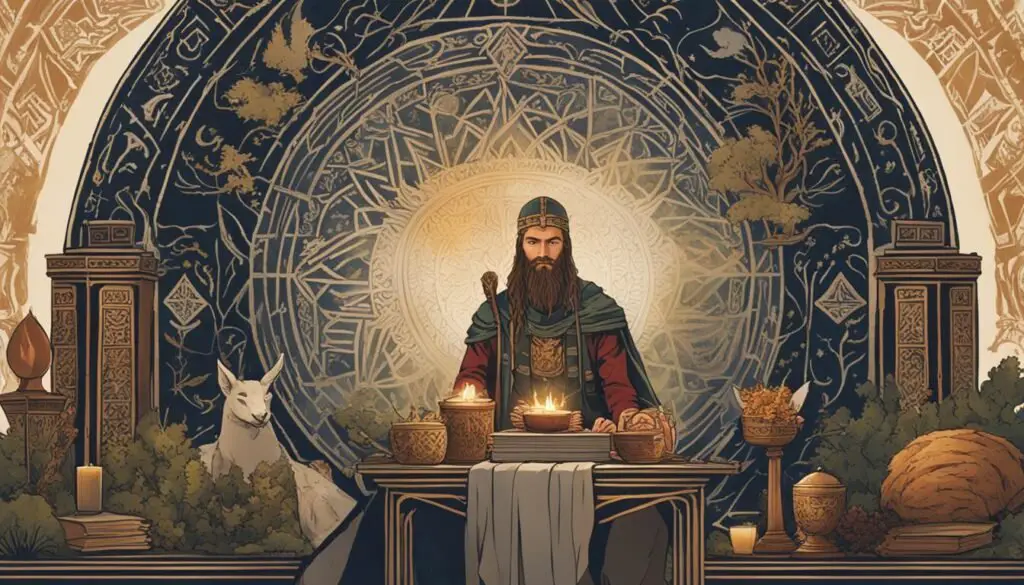
Norse mythology, with its rich pantheon of gods, captivating stories, and powerful symbols, has permeated popular culture in various forms. From literature to art, film to video games, the influence of Norse mythology can be seen and felt. Its enduring popularity among modern pagans further emphasizes its relevance in today’s society.
Literature and Art
Norse mythology has inspired countless works of literature and art, captivating readers and viewers with its epic tales and mystical characters. Authors like J.R.R. Tolkien, Neil Gaiman, and Rick Riordan have drawn inspiration from Norse mythology in their novels, introducing readers to the enchanting world of gods, giants, and heroes. Artwork featuring Norse gods and mythological creatures can be found in museums, galleries, and popular culture merchandise, showcasing the enduring fascination with this ancient belief system.
Film and Television
The impact of Norse mythology on the silver screen is undeniable, with blockbuster films such as the Marvel Cinematic Universe’s “Thor” series bringing Norse gods like Thor, Loki, and Odin to life. These cinematic adaptations have introduced audiences to the complex relationships and extraordinary powers of the Norse pantheon. Additionally, television series like “Vikings” have explored the gritty and mythical world of the Vikings, intertwining elements of Norse mythology with historical events.
Video Games
Norse mythology has also become a favorite theme in the realm of video games, with titles like “God of War” and “Assassin’s Creed Valhalla” immersing players in epic Norse-inspired adventures. Gamers can experience the supernatural abilities of gods, delve into mythological realms, and encounter Norse deities as they navigate through exciting quests. These games provide a unique interactive platform for exploring the rich lore and symbolism of Norse mythology.
The popularity of Norse mythology in modern paganism further solidifies its significance in contemporary spiritual practices and beliefs. Followers of modern paganism often draw inspiration from the ancient Norse traditions, incorporating Norse gods and rituals into their worship. The symbolism of Norse mythology, representing various aspects of life and nature, resonates deeply with those seeking a connection to their ancestral heritage and a deeper understanding of the world around them.
Modern Interpretations and Revival of Norse Mythology
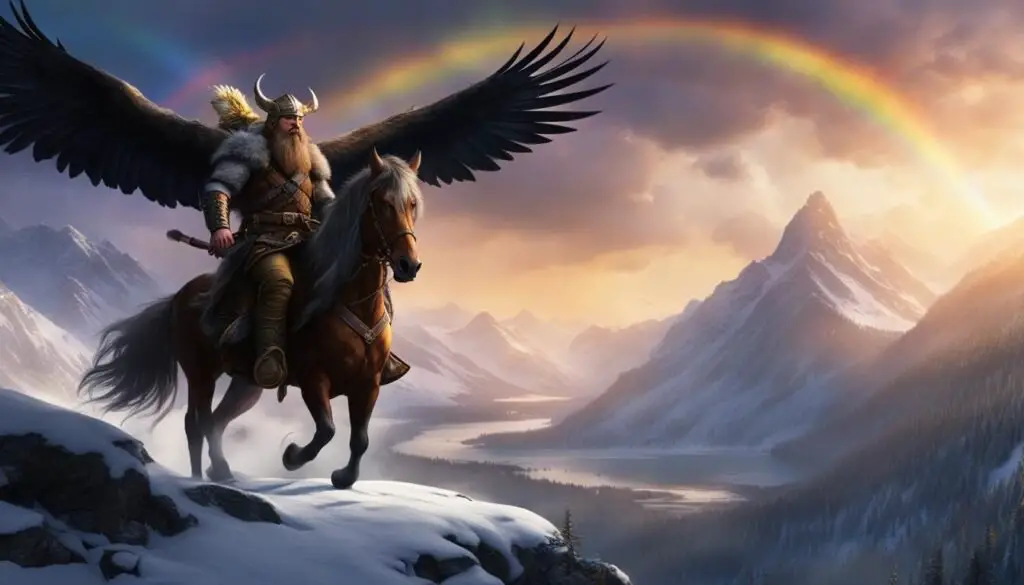
The modern interpretation of Norse mythology and the revival of the old Nordic religion shed light on the rich history and deep-rooted beliefs of ancient Scandinavians. Drawing from the myths and traditions passed down through written sources, this resurgence offers individuals a personal perspective and connection to their ancestral heritage. Understanding Norse mythology and paganism is crucial to embracing the gods and immersing oneself in the worship of Norse mythological figures in the modern era.
Despite limited written sources, the revival of Norse mythology has gained momentum as believers seek to understand and interpret the ancient Nordic religion. This interpretation is highly individualistic, allowing room for variation and personal meaning. The fluidity of Norse mythology enables individuals to uncover their own understanding of the gods and their significance.
The revival of the old Nordic religion goes beyond mere historical curiosity. It serves as a way for believers to reconnect with their ancestral beliefs and traditions, providing a sense of cultural continuity. By embracing the gods and the worship associated with Norse mythology, modern individuals forge a personal bond with their cultural heritage and gain a deeper appreciation for the rich history of Norse mythology and paganism.
The Significance of Modern Interpretations
- Personal Connection: Modern interpretations of Norse mythology allow individuals to form a personal bond with the ancient gods, creating a sense of belonging and connection to ancestral roots.
- Cultural Heritage: Reviving the worship and rituals associated with Norse mythology helps preserve and celebrate the cultural heritage of ancient Scandinavian societies, promoting a deeper understanding of their values and traditions.
- Exploring Spirituality: The revival of Norse mythology provides an alternative spiritual path for those seeking a connection to nature, ancestral beliefs, and a different perspective on divinity.
- Continuity of Tradition: By merging ancient traditions with modern interpretations, the revival of Norse mythology ensures the continuity of cultural practices, keeping the myths and rituals alive for future generations.
Conclusion
Norse mythology is deeply intertwined with paganism, serving as the foundation for the indigenous pre-Christian religion and beliefs of the Scandinavian peoples. The worship of Norse gods, the rituals and practices, and the rich myths and legends are all integral components of paganism. This ancient mythology and its associated practices have experienced a revival in modern times, providing individuals with a profound connection to their ancestral beliefs and traditions, while offering a unique and meaningful perspective on spirituality and cultural heritage.
The reemergence and reinterpretation of Norse mythology in contemporary society allow believers to engage with the gods and customs of the old Nordic religion. Through the continuation of ancient rituals and the exploration of written sources such as the Eddas, modern practitioners of Norse paganism seek to honor the gods and embrace the wisdom of their forebears.
By understanding the deep-rooted connection between Norse mythology and paganism, individuals can gain insight into the complexities of this spiritual tradition. Appreciating the significance of Norse gods, rituals, and myths provides a gateway to exploring the mysteries of the ancient Scandinavian world and underscores the enduring nature of these beliefs in the context of modern paganism.
FAQ
Is Norse mythology considered pagan?
Yes, Norse mythology is considered pagan as it encompasses the indigenous pre-Christian religion and beliefs of the Scandinavian peoples.
How is the worship of Norse gods practiced in modern times?
The worship of Norse gods in modern times involves making offerings, praising them through toasts and feasts, and invoking specific gods for various purposes through rituals and ceremonies.
What is Asatro and what is its history?
Asatro is the worship of the Norse gods, and the term became popular in the 19th century when the Vikings did not have a name for their religion. It is a revival of the old Norse religion and incorporates myths and traditions passed down through written sources.
What is the significance of sacrifice in Norse paganism?
Sacrifice, known as blót, played a significant role in Norse pagan rituals and modern believers in the old Nordic religion continue this tradition. It is performed during ceremonies held four times a year to ensure fertility, growth, and other blessings.
How did the Vikings celebrate different festivals throughout the year?
The Vikings celebrated different festivals throughout the year, such as the winter solstice, spring equinox, summer solstice, and autumn equinox, with specific rituals and feasts. Festivals during the winter half of the year were marked by celebrations that lasted for weeks.
What were the different types of worship and beliefs in Norse paganism?
In Norse paganism, worship and rituals were tied to the village and the family, with leaders managing the faith on behalf of society. The worship of female powers played a significant role and different animals and objects were connected to the worship of different gods.
What are the surviving myths and legends in Norse mythology?
The surviving myths and legends in Norse mythology can be found in texts such as the Poetic Edda, Prose Edda, Scandinavian folklore, and other Germanic literatures. Runic inscriptions, runestones, and image stones also depict scenes from Norse mythology.
How does Norse mythology compare to Anglo-Saxon mythology?
Norse mythology is closely related to Anglo-Saxon mythology and is considered the best-preserved version of the older common Germanic paganism. Both mythologies share similar characters and stories that were passed down through poetry, literature, and oral traditions.
How has Norse mythology influenced popular culture?
Norse mythology has had a significant impact on popular culture, with its gods, stories, and symbols appearing in literature, art, film, and video games. It has also been incorporated into modern pagan spiritual practices and beliefs.
What is the modern interpretation and revival of Norse mythology based on?
The modern interpretation and revival of Norse mythology are based on myths and traditions passed down through written sources, although interpretations can vary due to limited written sources. The revival aims to connect individuals with ancestral beliefs and traditions.
What is the conclusion regarding Norse mythology and paganism?
Norse mythology is considered pagan and is closely intertwined with the worship of Norse gods in modern pagan culture. It provides a connection to ancestral traditions, spirituality, and cultural heritage.


